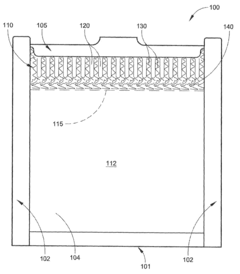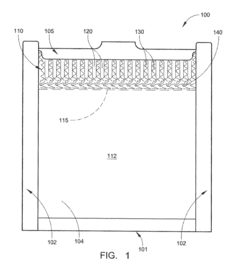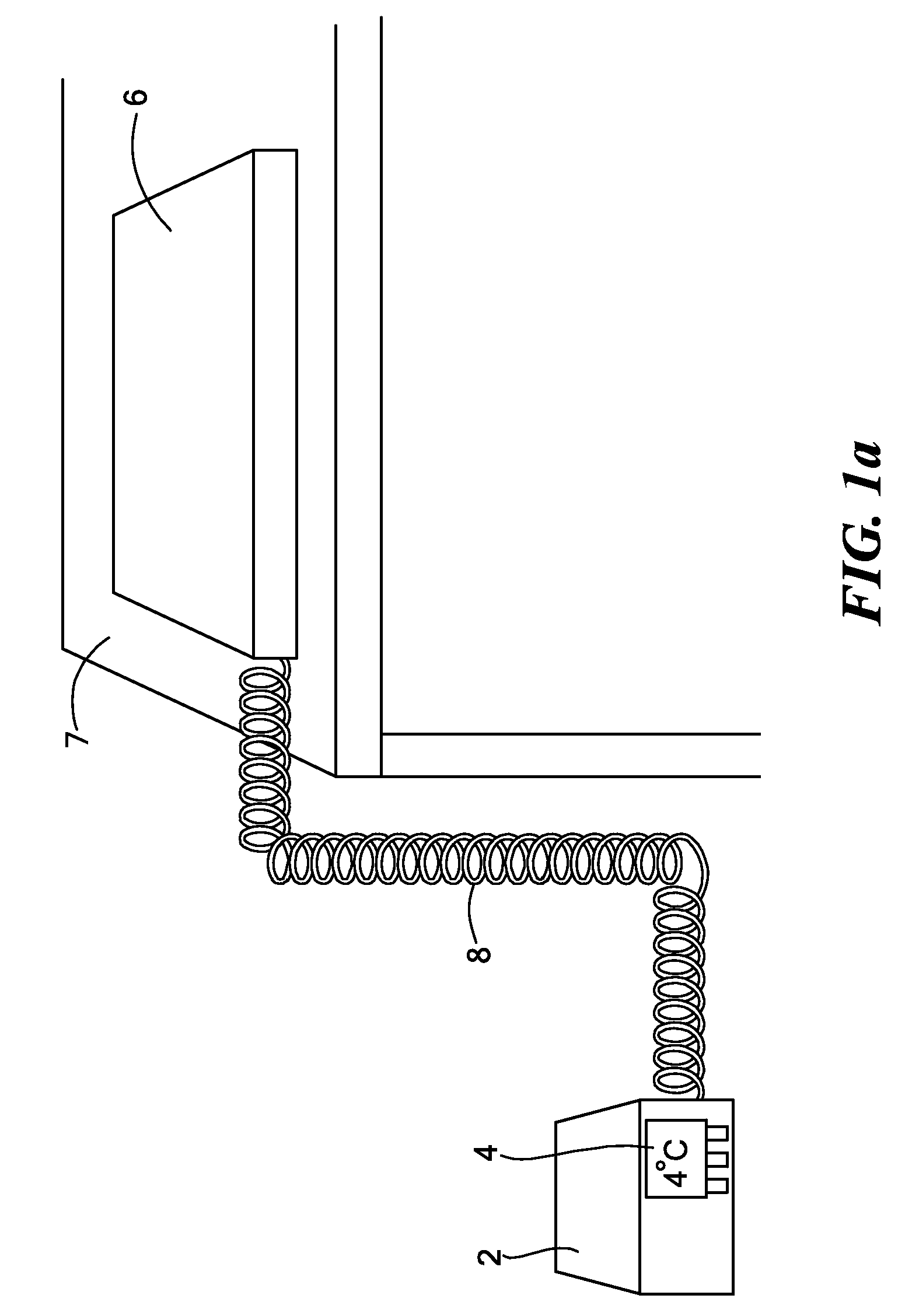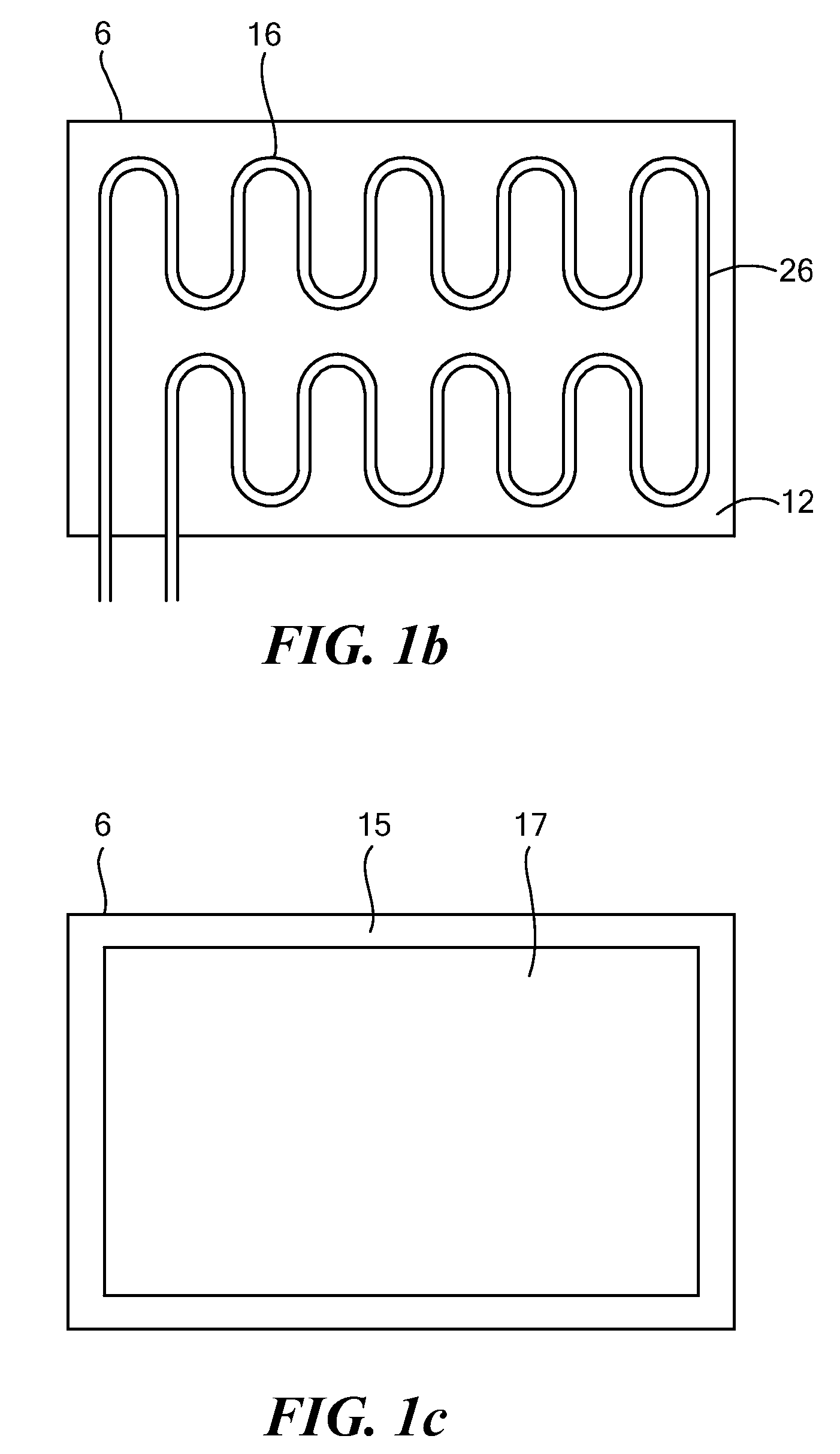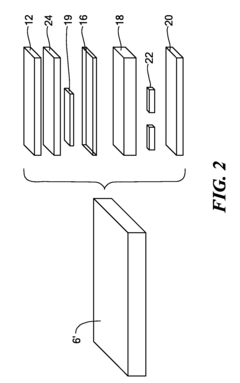How to Ensure Precision Gel Electrophoresis Separation Under Diverse Conditions?
JUL 1, 20259 MIN READ
Generate Your Research Report Instantly with AI Agent
Patsnap Eureka helps you evaluate technical feasibility & market potential.
Gel Electrophoresis Precision Challenges
Gel electrophoresis is a fundamental technique in molecular biology, widely used for separating and analyzing DNA, RNA, and proteins. However, ensuring precise separation under diverse conditions remains a significant challenge. The complexity of biological samples, variations in environmental factors, and the intricate nature of the electrophoresis process itself contribute to this challenge.
One of the primary precision challenges in gel electrophoresis is maintaining consistent sample migration across different runs. Factors such as gel composition, buffer concentration, and electric field strength can significantly impact the movement of molecules through the gel matrix. Even slight variations in these parameters can lead to inconsistent results, making it difficult to compare data across experiments or between laboratories.
Temperature fluctuations during electrophoresis pose another critical challenge to precision. As electric current passes through the gel, it generates heat, which can cause uneven migration of molecules and band distortion. This "smile effect" or "edge effect" can compromise the accuracy of size estimation and quantification of separated molecules.
The loading of samples into gel wells is another area where precision can be compromised. Uneven sample loading or overloading can result in smeared or poorly resolved bands, making accurate analysis challenging. Additionally, the formation of air bubbles during sample loading can disrupt the electric field and cause irregular migration patterns.
Gel composition and quality are crucial factors affecting separation precision. Inconsistencies in gel polymerization, such as uneven pore sizes or the presence of contaminants, can lead to irregular migration patterns and poor resolution. This is particularly problematic when working with high-resolution applications or when separating molecules with small size differences.
The choice of staining method and its application can also impact the precision of gel electrophoresis results. Over-staining or under-staining can affect band visibility and quantification accuracy. Moreover, some staining techniques may introduce background noise or interfere with downstream applications, further complicating precise analysis.
Electrophoresis buffer composition and pH play a critical role in separation precision. Changes in ionic strength or pH can alter the charge-to-mass ratio of molecules, affecting their migration behavior. Maintaining buffer consistency across experiments is essential for reproducible results, but can be challenging when working with diverse sample types or under varying environmental conditions.
One of the primary precision challenges in gel electrophoresis is maintaining consistent sample migration across different runs. Factors such as gel composition, buffer concentration, and electric field strength can significantly impact the movement of molecules through the gel matrix. Even slight variations in these parameters can lead to inconsistent results, making it difficult to compare data across experiments or between laboratories.
Temperature fluctuations during electrophoresis pose another critical challenge to precision. As electric current passes through the gel, it generates heat, which can cause uneven migration of molecules and band distortion. This "smile effect" or "edge effect" can compromise the accuracy of size estimation and quantification of separated molecules.
The loading of samples into gel wells is another area where precision can be compromised. Uneven sample loading or overloading can result in smeared or poorly resolved bands, making accurate analysis challenging. Additionally, the formation of air bubbles during sample loading can disrupt the electric field and cause irregular migration patterns.
Gel composition and quality are crucial factors affecting separation precision. Inconsistencies in gel polymerization, such as uneven pore sizes or the presence of contaminants, can lead to irregular migration patterns and poor resolution. This is particularly problematic when working with high-resolution applications or when separating molecules with small size differences.
The choice of staining method and its application can also impact the precision of gel electrophoresis results. Over-staining or under-staining can affect band visibility and quantification accuracy. Moreover, some staining techniques may introduce background noise or interfere with downstream applications, further complicating precise analysis.
Electrophoresis buffer composition and pH play a critical role in separation precision. Changes in ionic strength or pH can alter the charge-to-mass ratio of molecules, affecting their migration behavior. Maintaining buffer consistency across experiments is essential for reproducible results, but can be challenging when working with diverse sample types or under varying environmental conditions.
Market Analysis for Advanced Separation Techniques
The market for advanced separation techniques, particularly gel electrophoresis, has been experiencing steady growth due to increasing demand in various fields such as molecular biology, genetics, and proteomics. The global gel electrophoresis market is projected to reach significant value in the coming years, driven by factors such as technological advancements, rising investments in research and development, and growing applications in pharmaceutical and biotechnology industries.
Gel electrophoresis remains a crucial technique for separating and analyzing DNA, RNA, and proteins. The demand for precise and reliable separation under diverse conditions has led to the development of more sophisticated systems and reagents. This trend is particularly evident in the research sector, where the need for high-resolution separation of complex biological samples continues to grow.
The pharmaceutical and biotechnology industries are major contributors to the market growth of advanced separation techniques. These sectors rely heavily on gel electrophoresis for drug discovery, quality control, and production processes. The increasing focus on personalized medicine and genomics has further boosted the demand for precise separation techniques capable of handling diverse sample types and conditions.
Academic and research institutions represent another significant market segment for advanced separation techniques. The ongoing research in fields such as genomics, proteomics, and metabolomics requires robust and versatile separation methods. This has led to a growing market for specialized gel electrophoresis systems and consumables designed to meet the specific needs of researchers working under varied experimental conditions.
The clinical diagnostics sector is also driving market growth, with gel electrophoresis playing a crucial role in various diagnostic applications. The need for accurate and reliable separation techniques in clinical laboratories has spurred innovations in gel electrophoresis systems, focusing on automation, reproducibility, and the ability to handle diverse sample types.
Geographically, North America and Europe dominate the market for advanced separation techniques, owing to their well-established research infrastructure and significant investments in life sciences. However, the Asia-Pacific region is emerging as a rapidly growing market, driven by increasing research activities, rising healthcare expenditure, and growing awareness about advanced analytical techniques.
The market landscape is characterized by the presence of several key players offering a wide range of gel electrophoresis products and solutions. These companies are continuously investing in research and development to enhance their product portfolios and address the evolving needs of end-users across different industries. The competitive environment has led to innovations in areas such as high-throughput systems, miniaturization, and integration with other analytical techniques.
Gel electrophoresis remains a crucial technique for separating and analyzing DNA, RNA, and proteins. The demand for precise and reliable separation under diverse conditions has led to the development of more sophisticated systems and reagents. This trend is particularly evident in the research sector, where the need for high-resolution separation of complex biological samples continues to grow.
The pharmaceutical and biotechnology industries are major contributors to the market growth of advanced separation techniques. These sectors rely heavily on gel electrophoresis for drug discovery, quality control, and production processes. The increasing focus on personalized medicine and genomics has further boosted the demand for precise separation techniques capable of handling diverse sample types and conditions.
Academic and research institutions represent another significant market segment for advanced separation techniques. The ongoing research in fields such as genomics, proteomics, and metabolomics requires robust and versatile separation methods. This has led to a growing market for specialized gel electrophoresis systems and consumables designed to meet the specific needs of researchers working under varied experimental conditions.
The clinical diagnostics sector is also driving market growth, with gel electrophoresis playing a crucial role in various diagnostic applications. The need for accurate and reliable separation techniques in clinical laboratories has spurred innovations in gel electrophoresis systems, focusing on automation, reproducibility, and the ability to handle diverse sample types.
Geographically, North America and Europe dominate the market for advanced separation techniques, owing to their well-established research infrastructure and significant investments in life sciences. However, the Asia-Pacific region is emerging as a rapidly growing market, driven by increasing research activities, rising healthcare expenditure, and growing awareness about advanced analytical techniques.
The market landscape is characterized by the presence of several key players offering a wide range of gel electrophoresis products and solutions. These companies are continuously investing in research and development to enhance their product portfolios and address the evolving needs of end-users across different industries. The competitive environment has led to innovations in areas such as high-throughput systems, miniaturization, and integration with other analytical techniques.
Current Limitations in Gel Electrophoresis
Gel electrophoresis, a cornerstone technique in molecular biology, faces several limitations that hinder its precision and reliability across diverse conditions. One of the primary challenges is the inconsistency in gel composition and quality. Variations in gel preparation, including differences in agarose concentration, buffer composition, and polymerization conditions, can lead to inconsistent pore sizes and gel structures. This variability directly impacts the separation of molecules, particularly when dealing with complex samples or molecules of similar sizes.
Temperature fluctuations during electrophoresis pose another significant limitation. Joule heating, caused by the electric current passing through the gel, can create temperature gradients within the gel matrix. These temperature variations affect the mobility of molecules and can lead to band distortion or "smiling" effects, compromising the accuracy of size estimation and quantification. Maintaining consistent temperature across the entire gel, especially in larger formats, remains a persistent challenge.
The limited dynamic range of gel electrophoresis presents obstacles in analyzing samples with wide concentration ranges. Traditional gel systems struggle to simultaneously resolve and visualize both high and low abundance molecules within the same sample. This limitation often necessitates multiple runs with different sample dilutions or gel concentrations, increasing time and resource requirements.
Another critical limitation is the difficulty in achieving high resolution for molecules with similar molecular weights or charge-to-mass ratios. As the size difference between molecules decreases, the ability to distinctly separate them becomes increasingly challenging. This issue is particularly pronounced when analyzing complex mixtures or when precise size determination is crucial.
The manual nature of many gel electrophoresis procedures introduces variability and potential for human error. Inconsistencies in sample loading, gel handling, and staining processes can lead to artifacts or misinterpretation of results. The subjective nature of band intensity analysis in traditional gel imaging systems further compounds this issue, making quantitative comparisons between gels or experiments challenging.
Lastly, the limited throughput of conventional gel electrophoresis systems restricts their applicability in high-volume or time-sensitive applications. The sequential nature of gel preparation, running, and analysis creates bottlenecks in workflows, particularly in research or diagnostic settings requiring rapid turnaround times. This limitation becomes more pronounced when dealing with large sample sets or when integrating gel electrophoresis into automated analytical pipelines.
Temperature fluctuations during electrophoresis pose another significant limitation. Joule heating, caused by the electric current passing through the gel, can create temperature gradients within the gel matrix. These temperature variations affect the mobility of molecules and can lead to band distortion or "smiling" effects, compromising the accuracy of size estimation and quantification. Maintaining consistent temperature across the entire gel, especially in larger formats, remains a persistent challenge.
The limited dynamic range of gel electrophoresis presents obstacles in analyzing samples with wide concentration ranges. Traditional gel systems struggle to simultaneously resolve and visualize both high and low abundance molecules within the same sample. This limitation often necessitates multiple runs with different sample dilutions or gel concentrations, increasing time and resource requirements.
Another critical limitation is the difficulty in achieving high resolution for molecules with similar molecular weights or charge-to-mass ratios. As the size difference between molecules decreases, the ability to distinctly separate them becomes increasingly challenging. This issue is particularly pronounced when analyzing complex mixtures or when precise size determination is crucial.
The manual nature of many gel electrophoresis procedures introduces variability and potential for human error. Inconsistencies in sample loading, gel handling, and staining processes can lead to artifacts or misinterpretation of results. The subjective nature of band intensity analysis in traditional gel imaging systems further compounds this issue, making quantitative comparisons between gels or experiments challenging.
Lastly, the limited throughput of conventional gel electrophoresis systems restricts their applicability in high-volume or time-sensitive applications. The sequential nature of gel preparation, running, and analysis creates bottlenecks in workflows, particularly in research or diagnostic settings requiring rapid turnaround times. This limitation becomes more pronounced when dealing with large sample sets or when integrating gel electrophoresis into automated analytical pipelines.
Existing Solutions for Precision Separation
01 Improved gel composition for electrophoresis
Advanced gel compositions are developed to enhance the precision of separation in gel electrophoresis. These compositions may include specific polymers, cross-linking agents, or additives that improve resolution and reduce band diffusion. The improved gels allow for better separation of molecules based on size, charge, or other properties.- Improved gel composition for electrophoresis: Advanced gel compositions are developed to enhance the precision of separation in gel electrophoresis. These compositions may include specific polymers, cross-linking agents, or additives that improve resolution and reduce band diffusion. The improved gels allow for better separation of molecules based on size, charge, or other properties.
- Novel electrode designs for enhanced separation: Innovative electrode designs are implemented to improve the precision of gel electrophoresis. These designs may include modified electrode shapes, materials, or configurations that create more uniform electric fields or reduce edge effects. The enhanced electrodes contribute to more consistent and accurate separation of molecules across the gel.
- Advanced buffer systems for precise separation: Specialized buffer systems are developed to optimize the precision of gel electrophoresis. These buffers may contain specific ions, pH regulators, or additives that enhance the separation of molecules. The advanced buffer compositions contribute to improved resolution and reduced band broadening during electrophoresis.
- Microfluidic devices for high-precision electrophoresis: Miniaturized microfluidic devices are designed for high-precision gel electrophoresis. These devices incorporate microchannels, integrated electrodes, and precise sample handling mechanisms. The miniaturization allows for better control over separation conditions, resulting in improved precision and resolution.
- Computer-aided analysis for enhanced precision: Advanced software and algorithms are developed to analyze gel electrophoresis results with higher precision. These tools may include image processing techniques, pattern recognition algorithms, or machine learning approaches to accurately interpret electrophoresis data. The computer-aided analysis enhances the overall precision of the separation process.
02 Novel electrode designs for enhanced separation
Innovative electrode designs are implemented to improve the precision of gel electrophoresis. These designs may include modified electrode shapes, materials, or configurations that create more uniform electric fields or reduce edge effects. The enhanced electrodes contribute to more consistent and accurate separation of molecules across the gel.Expand Specific Solutions03 Advanced buffer systems for precise separation
Specialized buffer systems are developed to optimize the precision of gel electrophoresis. These buffers may contain specific ions, pH regulators, or additives that enhance the separation of molecules. The advanced buffer systems help maintain consistent conditions throughout the electrophoresis process, leading to more accurate and reproducible results.Expand Specific Solutions04 Integration of microfluidic technologies
Microfluidic technologies are incorporated into gel electrophoresis systems to achieve higher precision separation. These innovations may include miniaturized channels, precise sample loading mechanisms, or integrated detection systems. The integration of microfluidics allows for better control over sample volumes, reduced diffusion, and improved resolution in molecular separation.Expand Specific Solutions05 Advanced detection and analysis methods
Sophisticated detection and analysis methods are developed to enhance the precision of gel electrophoresis results. These may include high-resolution imaging techniques, fluorescence-based detection, or computer-aided analysis algorithms. The advanced detection methods allow for more accurate quantification and characterization of separated molecules, improving the overall precision of the technique.Expand Specific Solutions
Key Players in Electrophoresis Industry
The precision gel electrophoresis separation market is in a mature stage, with established technologies and a diverse range of players. The global market size for electrophoresis equipment and supplies is estimated to be over $1 billion, driven by increasing applications in genomics, proteomics, and clinical diagnostics. Key players like Bio-Rad Laboratories, Life Technologies, and Thermo Fisher Scientific dominate the market with advanced systems. Emerging companies such as Sage Science and Expedeon are introducing innovative technologies to improve separation precision under varied conditions. Academic institutions like Jilin University and the University of Southampton contribute to ongoing research and development in this field, pushing the boundaries of electrophoresis techniques for diverse applications.
Bio-Rad Laboratories, Inc.
Technical Solution: Bio-Rad has developed a comprehensive approach to ensure precision gel electrophoresis separation under diverse conditions. Their system includes advanced buffer formulations that maintain pH stability across a wide range of temperatures and ionic strengths[1]. They have also introduced innovative gel matrices with controlled pore sizes, allowing for consistent separation of molecules ranging from small proteins to large DNA fragments[2]. Bio-Rad's electrophoresis equipment features precise temperature control mechanisms, ensuring uniform heat distribution and preventing "smile effect" distortions[3]. Additionally, they have implemented digital imaging and analysis software that can automatically adjust for variations in running conditions, providing highly reproducible results across different laboratories and experimental setups[4].
Strengths: Comprehensive system approach, advanced buffer formulations, innovative gel matrices, precise temperature control, and digital analysis software. Weaknesses: Potentially higher cost due to specialized equipment and consumables, may require more training for optimal use.
Sage Science, Inc.
Technical Solution: Sage Science has developed the Pippin Prep and BluePippin systems, which utilize pulsed-field gel electrophoresis technology for high-precision DNA size selection[1]. These automated systems employ pre-cast gel cassettes with internal standards, ensuring highly accurate and reproducible size selection across diverse conditions[2]. The proprietary Sage Science algorithm continuously monitors and adjusts the electric field during separation, compensating for variations in temperature, buffer composition, and sample load[3]. This adaptive approach allows for consistent performance even with challenging samples or in fluctuating environmental conditions. The company has also introduced a unique optical detection system that provides real-time monitoring of DNA migration, enabling on-the-fly adjustments to separation parameters[4].
Strengths: Automated systems, high precision size selection, adaptive algorithms for diverse conditions, real-time monitoring. Weaknesses: Primarily focused on DNA applications, may have limited flexibility for protein or RNA separations.
Innovations in Gel Composition and Buffers
Electrophoresis Gel and Method of Making Same
PatentInactiveUS20100236932A1
Innovation
- Incorporating insoluble pigmented materials into the loading area of the electrophoresis gel, such as dry powder-coat paint or colored plastic beads, to create a visually distinct area that is easy to see, without interfering with the electrophoretic separation.
Laboratory Temperature Control With Ultra-Smooth Heat Transfer Surfaces
PatentInactiveUS20080029248A1
Innovation
- A temperature regulation system with a polished surface of low emissivity, integrated with a miniature rotary compressor and a refrigeration assembly, which circulates coolant fluid to efficiently transfer heat away from the electrophoresis buffer, maintaining a stable temperature and allowing higher voltage applications.
Standardization of Electrophoresis Protocols
Standardization of electrophoresis protocols is crucial for ensuring precision gel electrophoresis separation under diverse conditions. This process involves establishing consistent methods and parameters across different laboratories and experimental setups. The primary goal is to minimize variability and enhance reproducibility in gel electrophoresis results.
One key aspect of standardization is the preparation of gel matrices. This includes specifying the exact concentration of agarose or polyacrylamide, as well as the buffer composition and pH. These factors significantly influence the separation of molecules and must be carefully controlled to achieve consistent results. Additionally, standardized protocols should detail the optimal voltage and run time for different types of samples and gel compositions.
Sample preparation is another critical area for standardization. Protocols should outline precise methods for sample collection, storage, and loading onto the gel. This includes specifying the buffer conditions for sample dilution and the use of loading dyes. Standardized sample volumes and concentrations are essential for accurate comparisons between experiments.
The choice and preparation of molecular weight markers or ladders should also be standardized. These markers serve as reference points for size determination and must be consistently applied across experiments. Protocols should specify the type and concentration of markers to be used for different applications.
Imaging and analysis techniques form another crucial component of standardized protocols. This includes specifying the staining methods, image capture settings, and analysis software to be used. Standardization in this area ensures that data interpretation is consistent across different laboratories and experiments.
Quality control measures are integral to standardized protocols. This involves regular calibration of equipment, such as power supplies and imaging systems, as well as the use of control samples to verify the performance of the electrophoresis system. Protocols should include guidelines for troubleshooting common issues and criteria for accepting or rejecting results based on quality standards.
Documentation and reporting standards are essential for the effective implementation of standardized protocols. This includes detailed record-keeping of all experimental parameters, as well as standardized formats for presenting and sharing results. Such documentation facilitates the comparison of results across different laboratories and experiments, enhancing the overall reliability of gel electrophoresis data.
One key aspect of standardization is the preparation of gel matrices. This includes specifying the exact concentration of agarose or polyacrylamide, as well as the buffer composition and pH. These factors significantly influence the separation of molecules and must be carefully controlled to achieve consistent results. Additionally, standardized protocols should detail the optimal voltage and run time for different types of samples and gel compositions.
Sample preparation is another critical area for standardization. Protocols should outline precise methods for sample collection, storage, and loading onto the gel. This includes specifying the buffer conditions for sample dilution and the use of loading dyes. Standardized sample volumes and concentrations are essential for accurate comparisons between experiments.
The choice and preparation of molecular weight markers or ladders should also be standardized. These markers serve as reference points for size determination and must be consistently applied across experiments. Protocols should specify the type and concentration of markers to be used for different applications.
Imaging and analysis techniques form another crucial component of standardized protocols. This includes specifying the staining methods, image capture settings, and analysis software to be used. Standardization in this area ensures that data interpretation is consistent across different laboratories and experiments.
Quality control measures are integral to standardized protocols. This involves regular calibration of equipment, such as power supplies and imaging systems, as well as the use of control samples to verify the performance of the electrophoresis system. Protocols should include guidelines for troubleshooting common issues and criteria for accepting or rejecting results based on quality standards.
Documentation and reporting standards are essential for the effective implementation of standardized protocols. This includes detailed record-keeping of all experimental parameters, as well as standardized formats for presenting and sharing results. Such documentation facilitates the comparison of results across different laboratories and experiments, enhancing the overall reliability of gel electrophoresis data.
Environmental Impact of Electrophoresis Materials
Gel electrophoresis, while a powerful analytical technique, has environmental implications that warrant careful consideration. The materials used in this process, particularly the gels and buffers, can have significant environmental impacts if not properly managed.
Agarose and polyacrylamide, the two primary gel materials, pose different environmental challenges. Agarose, derived from seaweed, is biodegradable but its production may contribute to marine ecosystem disruption. Polyacrylamide, a synthetic polymer, is not biodegradable and can persist in the environment. The acrylamide monomer used in its synthesis is highly toxic and carcinogenic, necessitating stringent handling and disposal protocols.
Electrophoresis buffers, typically containing Tris, borate, or acetate, can alter soil and water pH if released into the environment. These chemicals may disrupt local ecosystems and affect aquatic life. Additionally, ethidium bromide, a common nucleic acid stain, is a potent mutagen and its disposal requires specialized procedures to prevent environmental contamination.
The power consumption of electrophoresis equipment contributes to the overall carbon footprint of laboratories. While individual runs may not consume significant energy, the cumulative effect across numerous laboratories worldwide is substantial. This underscores the need for energy-efficient equipment and optimized protocols to minimize environmental impact.
Waste management is a critical aspect of mitigating the environmental impact of electrophoresis materials. Proper disposal of gels, buffers, and contaminated plastics is essential to prevent soil and water pollution. Many institutions have implemented recycling programs for electrophoresis buffers and have adopted alternative, less toxic staining methods to reduce hazardous waste generation.
The production and transportation of electrophoresis materials also contribute to their environmental footprint. Manufacturing processes for gels and buffers consume resources and energy, while global distribution networks rely heavily on fossil fuels. Efforts to develop more sustainable production methods and localize supply chains can help mitigate these impacts.
As the scientific community becomes increasingly aware of these environmental concerns, there is a growing trend towards developing more eco-friendly alternatives. Research into plant-based gels, non-toxic stains, and recyclable plastics for electrophoresis equipment is ongoing. These innovations aim to maintain the precision and reliability of gel electrophoresis while reducing its environmental impact.
Agarose and polyacrylamide, the two primary gel materials, pose different environmental challenges. Agarose, derived from seaweed, is biodegradable but its production may contribute to marine ecosystem disruption. Polyacrylamide, a synthetic polymer, is not biodegradable and can persist in the environment. The acrylamide monomer used in its synthesis is highly toxic and carcinogenic, necessitating stringent handling and disposal protocols.
Electrophoresis buffers, typically containing Tris, borate, or acetate, can alter soil and water pH if released into the environment. These chemicals may disrupt local ecosystems and affect aquatic life. Additionally, ethidium bromide, a common nucleic acid stain, is a potent mutagen and its disposal requires specialized procedures to prevent environmental contamination.
The power consumption of electrophoresis equipment contributes to the overall carbon footprint of laboratories. While individual runs may not consume significant energy, the cumulative effect across numerous laboratories worldwide is substantial. This underscores the need for energy-efficient equipment and optimized protocols to minimize environmental impact.
Waste management is a critical aspect of mitigating the environmental impact of electrophoresis materials. Proper disposal of gels, buffers, and contaminated plastics is essential to prevent soil and water pollution. Many institutions have implemented recycling programs for electrophoresis buffers and have adopted alternative, less toxic staining methods to reduce hazardous waste generation.
The production and transportation of electrophoresis materials also contribute to their environmental footprint. Manufacturing processes for gels and buffers consume resources and energy, while global distribution networks rely heavily on fossil fuels. Efforts to develop more sustainable production methods and localize supply chains can help mitigate these impacts.
As the scientific community becomes increasingly aware of these environmental concerns, there is a growing trend towards developing more eco-friendly alternatives. Research into plant-based gels, non-toxic stains, and recyclable plastics for electrophoresis equipment is ongoing. These innovations aim to maintain the precision and reliability of gel electrophoresis while reducing its environmental impact.
Unlock deeper insights with Patsnap Eureka Quick Research — get a full tech report to explore trends and direct your research. Try now!
Generate Your Research Report Instantly with AI Agent
Supercharge your innovation with Patsnap Eureka AI Agent Platform!
